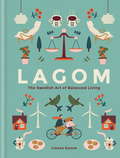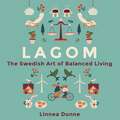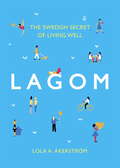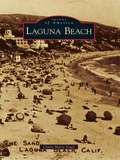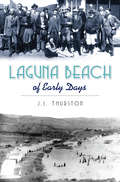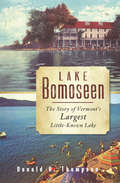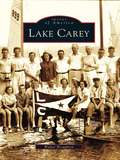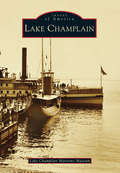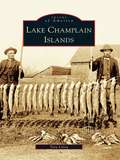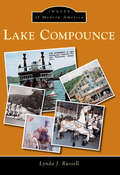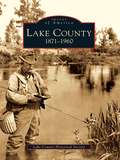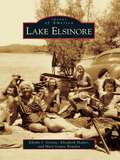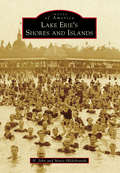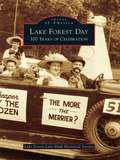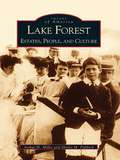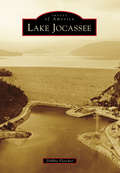- Table View
- List View
Lagom: The Swedish Art of Balanced Living
by Linnea DunneStep aside Hygge. Lagom is the new Scandi lifestyle trend taking the world by storm. This delightfully illustrated book gives you the lowdown on this transformative approach to life and examines how the lagom ethos has helped boost Sweden to the No.10 ranking in 2017's World Happiness Report. Lagom (pronounced 'lah-gom') has no equivalent in the English language but is loosely translated as 'not too little, not too much, just right'. It is widely believed that the word comes from the Viking term 'laget om', for when a mug of mead was passed around a circle and there was just enough for everyone to get a sip. But while the anecdote may hit the nail on the head, the true etymology of the word points to an old form of the word 'lag', which means 'law'.Far from restrictive, lagom is a liberating concept, praising the idea that anything more than 'just enough' is a waste of time. Crucially it also comes with a selflessness and core belief of responsibility and common good. By living lagom you can: Live a happier and more balanced life Reduce your environmental impact Improve your work-life balance Free your home from clutter Enjoy good food the Swedish way Grow your own and learn to forage Cherish the relationships with those you love
Lagom: The Swedish Art of Balanced Living
by Linnea DunneDiscover the Swedish ethos of balanced living with Lagom.Lagom (pronounced 'lar-gom') has no equivalent in the English language but is loosely translated as 'not too little, not too much, just right'. It is widely believed that the word comes from the Viking term 'laget om', for when a mug of mead was passed around a circle and there was just enough for everyone to get a sip. But while the anecdote may hit the nail on the head, the true etymology of the word points to an old form of the word 'lag', which means 'law'.Far from restrictive, lagom is a liberating concept, praising the idea that anything more that 'just enough' is a waste of time. Crucially it also comes with a selflessness and core belief of responsibility and common good. By living lagom you can live a happier and more balanced life, reduce your environmental impact, improve your work-life balance, free your home from clutter, enjoy good food the Swedish way, grow your own and learn to forage, and cherish the relationships with those you love.Linnea Dunne was born and raised in Sweden, where she started her writing career as a columnist at the local newspaper aged 15. She left for Ireland a few years later and eventually moved to London, where she studied Creative Writing and Political Communications. She now lives in Dublin with her husband and two half-Swedish kids, trying to achieve that lagom balance against all odds. Linnea's work on subjects ranging from motherhood to women's rights and media narratives has been published by (among others) the Irish Times, the Guardian and the Irish Independent, and she also works as Editor of Scan Magazine. The irony of the fact that she escaped her home country, never made it back, and now spends the majority of her day writing about Scandinavian culture, innovation and trends is lost on no one.(P) 2017 Octopus Publishing Group
Lagom: The Swedish Secret of Living Well
by Lola A ÅkerströmPerfect for fans of The Little Book of Hygge and Norwegian Wood, find the balance in life that is just right for you. Let Lola A. Åkerström, Editor-in-chief of Slow Travel Stockholm, be your companion to all things lagom.As the Swedish proverb goes, 'Lagom är bäst' (The right amount is best). Lagom sums up the Swedish psyche and is the reason why Sweden is one of the happiest countries in the world with a healthy work-life balance and high standards of living.Lagom is a way of living that promotes harmony. It celebrates fairness, moderation and being satisfied with and taking proper care of what you've got, including your well-being, relationships, and possessions. It's not about having too little or too much but about fully inviting contentment into our lives through making optimal decisions. Who better than Lola A. Åkerström to be your lagom guide? Sweden-based Lola is an award-winning writer, photographer , and editor-in-chief of Slow Travel Stockholm and she offers us a unique vantage point when it comes to adopting elements of a lagom lifestyle.Full of insights and beautiful photographs, taken by Lola herself, this authentic book will help you make small, simple changes to your every day life - whether that's your diet, lifestyle, money, work or your home - so you can have a more balanced way of living filled with contentment.
Lagom: The Swedish Secret of Living Well
by Lola A ÅkerströmPerfect for fans of The Little Book of Hygge and Norwegian Wood, find the balance in life that is just right for you. Let Lola A. Åkerström, Editor-in-chief of Slow Travel Stockholm, be your companion to all things lagom.As the Swedish proverb goes, 'Lagom är bäst' (The right amount is best). Lagom sums up the Swedish psyche and is the reason why Sweden is one of the happiest countries in the world with a healthy work-life balance and high standards of living.Lagom is a way of living that promotes harmony. It celebrates fairness, moderation and being satisfied with and taking proper care of what you've got, including your well-being, relationships, and possessions. It's not about having too little or too much but about fully inviting contentment into our lives through making optimal decisions. Who better than Lola A. Åkerström to be your lagom guide? Sweden-based Lola is an award-winning writer, photographer , and editor-in-chief of Slow Travel Stockholm and she offers us a unique vantage point when it comes to adopting elements of a lagom lifestyle.Full of insights and beautiful photographs, taken by Lola herself, this authentic book will help you make small, simple changes to your every day life - whether that's your diet, lifestyle, money, work or your home - so you can have a more balanced way of living filled with contentment.
Laguna Beach
by Claire Marie VogelAs one of the West Coast's most unique and beautiful resort cities, Laguna Beach has thrived as an enduring enclave of art culture, a destination of hidden beaches, and a coastline rich in natural wonders, which its officials and residents strive to maintain. Settlers arrived in the 1870s, and by the summer of 1918 Laguna's first art gallery opened, featuring works by a growing collective of local artists. Hundreds of visitors came on opening day and, in the next month, 2,000 more visited the small art gallery. In 1932, Laguna started what would become a world-renowned event called the Festival of the Arts and later added the equally famous Pageant of the Masters. Since its simple beginnings as a small village situated where Laguna Canyon opens onto the Pacific shoreline to the reason there are traffic jams on Coast Highway during hot-month weekends, this southern Orange County jewel has continued to be a great draw for beachgoers, painters, and nature lovers the world over.
Laguna Beach of Early Days
by J. S. ThurstonThe family of Laguna Beach founding father Joseph S. Thurston claimed a shack in Aliso Canyon in 1871, when he was just three years old. Thurston’s personal account of growing up in Laguna presents an intimate look at the settler’s hardships, relationships and perseverance. Recalling these struggles, he paints a graphic picture of early citizens and their contributions to the growth and development of this community. Originally published in 1947, this historical narrative serves as a marvelous, unique glimpse of a bygone era. Thurston’s grandson, Kelly H. Boyd, offers this revised edition for a new generation.
Lake Bomoseen: The Story of Vermont's Largest Little-Known Lake
by Donald H. ThompsonLake Bomoseen- the largest lake entirely within Vermont's borders- once attracted thousands of visitors each year. Its resorts and restaurants welcomed travelers of all stripes, from Walt Disney and Harpo Marx to humble groups of workers and families. Crowds flocked to beaches and picnic areas during the daytime, and headliners like Frank Sinatra and Louis Armstrong kept the Casino at the lake buzzing late into the night. Donald H. Thompson describes these and other glamorous moments in Lake Bomoseen's past and explains how the area has evolved since the last hotels and dance halls closed their doors. Carefully researched and accompanied by dozens of rare images, this is the definitive history of one of Vermont's finest spots.
Lake Carey (Images of America)
by Walter BroughtonLake Carey is a summer community of several hundred families in the Endless Mountains of northeast Pennsylvania. Lake Carey's story begins in 1874, when the narrow-gauge Montrose Railroad began service to the 262-acre glacial lake named Marcy's Pond. Cottages with gingerbread porches sprang up almost overnight; hotels, steamboats, and picnic groves swiftly followed. As World War I drew near, the renamed lake and its community were a fixture on the regional map. Their resort status was short-lived, however, as the changing American family and the advent of the automobile began an inexorable transformation. First to go were the crowded steamboats and excursion trains. A new, quieter era began, dominated by rental cottages and--at Lake Carey--regattas. Through vintage photographs, Lake Carey documents how the people who gathered here retained their strong sense of community born of the shared privilege of a place at the lake and the pleasures of summer pastimes.
Lake Champlain
by Lake Champlain Maritime MuseumNestled between the Adirondacks of New York and Vermont's Green Mountains, Lake Champlain offers 120 miles of tranquil beauty with a rich, bustling history. Picturesque waterfront communities established in the 18th century recall the era when the Champlain Valley's natural resources--iron, lumber, granite, marble, and potash--were shipped to distant ports on lake sloops and schooners. By the early 19th century, Lake Champlain was connected with the canals of New York and Quebec, and the resulting economic boom lasted for 100 years. Apples, hay, bricks, and finished goods were shipped on thousands of workaday canal boats that were also floating family homes. Massive steamboats carried travelers and tourists drawn to the fresh country air, and lakefront camps sprang up everywhere. Automobiles traveled over Lake Champlain on ferries and bridges. Through stunning historical images from the archives of Lake Champlain Maritime Museum and other regional collections, Lake Champlain tells the story of this busy commercial corridor and pastoral recreational destination.
Lake Champlain Islands
by Tara LiloiaOn July 3, 1609, French explorer Samuel de Champlain and his group canoed south from Canada into an expansive lake and found four islands. Those islands are now the Lake Champlain Islands, and it was that trip that gave birth to Vermont and sparked 400 years of history. Located in the far northwest corner of the state, the islands are well known as a shoreline retreat for all of New England, with their small-town feel and picturesque farmlands. In this birthplace of Vermont, with its rich soil, early settlers found success growing local varieties of apples, which they shipped by steamboat directly to international cities. Several large deposits of unique, dark limestone brought marble trade to the area, and these materials are still mined in working quarries today. The Lake Champlain Islands are a tranquil, yet vibrant area of Vermont, where historical buildings are often used as schools, museums, libraries, and private homes.
Lake Compounce (Images of Modern America)
by Lynda J. RussellFounded in October 1846 by two local families, Lake Compounce began its transformation from a rustic summer resort into a bustling amusement park. Gad Norton and Isaac Pierce teamed together to build a park that utilized the lake's natural appeal forswimming, boating, and picnicking. Through vintage photographs, Lake Compounce highlights the park's long history of big bands, the Crocodile Club, the Wildcat roller coaster, and the William Gillette train. For generations, the park has been able to maintain its status as a local treasure while expanding and growing into what is today recognized as "America's pioneer playground."
Lake County: 1871-1960
by Lake County Historical SocietyNative Americans roamed the beautiful lands of northern Michigan for many years, leaving a legacy of mature forests, clear waters, and plentiful game. By 1871, waves of immigrants were arriving from Europe, as well as Union soldiers after the Civil War. These pioneers brought with them the tools, know-how, and determination to transform the wild land into an economy based on the timber, railroads, and farming. Schools, churches, businesses, and tourism blossomed. The county's 156 lakes and 46 trout streams offered pristine settings for swimming, boating, hunting, and fishing. Resorts, sporting clubs, and cottage colonies sprang up to meet the needs of seasonal visitors. Early fishing guide and hotelier Andrew J. Bradford, financiers Curtis W. MacPhail and Robert J. Smith, philanthropist Martin Johnson, and others nurtured the growth of the communities. The Civilian Conservation Corps replanted the forests and built roads, the African American resort of Idlewild showcased black entertainers, and Raymond W. Overholzer built Shrine of the Pines, all promoting the county's development.
Lake Elsinore
by Elizabeth Hepler Edythe J. Greene Mary Louise RowdenAt the foot of the Ortega Mountains on the flank of Cleveland National Forest, the 3,300-acre Lake Elsinore is one of Southern California's more spectacular natural wonders. It is also the region's only large natural lake. The city of the same name on its shores was incorporated in 1888 through the efforts of financier Franklin H. Heald. His partner, D. M. Graham, fancifully wrote, "We can imagine no more enchanting picture than Elsinore will present when the tasteand energy of the settlers shall have made it a valley of fruit and flowers in the midst of which the lake shall lie like a priceless gem." Named after the castle in Shakespeare's Hamlet, the lake and city proved to be a stopover spot for hunters and ranchers, eventually vacationers, and then water and motor sports aficionados. Today Lake Elsinore has a thriving population of about 30,000 year-round residents in the southwestern corner of Riverside County.
Lake Erie's Shores and Islands
by Marie Hildebrandt H. John HildebrandtFor 150 years, people have come to rest, relax, and recharge in the area from Vermilion to Port Clinton, south to Milan, Bellevue, and Fremont, and north to Sandusky, Cedar Point, the Marblehead Peninsula, and the Lake Erie Islands. Lake Erie is the constant in this fascinating story, the natural resource that gives the region its character and charm. Quaint wineries, world-class roller coasters, amusement parks, water toboggans, indoor and outdoor water parks, lake steamers and jet boats, cottage communities, sportfishing, swimming, sailing, boating, camping, historical sites, caverns, museums, beaches, Civil War history, resort hotels, religious retreats, and natural wonders--Lake Erie's shores and islands have a rich tourism and recreation history.
Lake Forest Day: 100 Years of Celebration
by Lake Forest-Lake Bluff Historical SocietyThe first Lake Forest Day in 1908 included a hot air balloon ascension, a cutest baby contest, a mind-reading dog, and a vaudeville show. Proceeds from this event, organized by the Lake Forest Woman's Club, funded the Contagious Hospital, which eventually merged into Lake Forest Hospital. American Legion Post 264 took over in 1921 and has maintained this extraordinary tradition ever since. This annual celebration has changed over the years to reflect local interests, national events, and even cultural shifts. With the advent of World War II, the themes became patriotic, such as "Home Defense," "Prelude to Victory," and "On to Tokyo." Lake Forest Day, held on the first Wednesday of August, continues to inspire civic pride. This book represents a fascinating look at Lake Forest in 1908 and the century thereafter, as parades, carnivals, and contests energized community spirit.
Lake Forest: Estates, People, and Culture (Images of America)
by Shirley M. Paddock Arthur H. MillerLake Forest: Estates, People, and Culture is the first book-scaled historical survey entirely focused on this notable Chicago North Shore suburb in a generation, offering a newly visual approach to the community's unique early past. Many of the nearly 200 images have never been published, having been newly discovered in local archives and family collections. From the Civil War to World War I especially, this community of millionaires flourished, giving rise to a diverse whole town-within-a-town whose local industry comprised the estates and their owners. West Lake Forest had been settled by Irish-descendant farmers after 1836, but by 1857 a new sort of community had sprung up further east, between the then-new railroad line along the lake and the shore. It was a wooded, naturalistic, anti-urban suburb, centered on education and faith, established by New England descendant Chicago Presbyterians, and businessmen with their families.
Lake Jocassee (Images of America)
by Debbie FletcherThe creation of Lake Jocassee by Duke Power Company's massive Keowee-Toxaway Project in the late 1960s and early 1970s flooded a quaint mountain valley whose earliest recorded history was in 1539, when Spanish explorer Hernando de Soto led an expedition through the present-day Jocassee Gorges. In 1971, hundreds watched the slow retreat of the Whitewater, Thompson, Horsepasture, Toxaway, and Keowee Rivers as they formed one large lake, smothering homes, lands, and farms in the process. Years of monitoring the water flow through the valley proved initial estimates correct, and Lake Jocassee became the deepwater source it was intended to be, providing an adequate supply of water to generate electricity. Today, a new generation enjoys many recreational activities on what is known as the "Jewel in South Carolina's Crown," a pristine lake surrounded by the Blue Ridge Mountains in Oconee and Pickens Counties.
Lake Junaluska
by William E. KingReligion spread swiftly across our new nation with the help of camp meetings where families, taking a break from farm labor, gathered for inspiration and socializing. The late-19th-century religious experience expanded the concept by adding educational and recreational opportunities. Permanent campgrounds appeared, the most renowned being Chautauqua in New York. In 1913, Southern Methodists created their own institution with the first conference at Lake Junaluska in western North Carolina. Capitalizing on the beauty of the Appalachian Mountains, Lake Junaluska Assembly, a conference center of the United Methodist Church, became an attraction for inspiration, instruction, relaxation, and recreation. Renowned preachers such as Billy Graham and speakers like Eleanor Roosevelt have filled its iconic round auditorium. Approximately 200,000 annual visitors join a residential community to make Lake Junaluska a destination in its own right amid the attractions of nearby Asheville, Waynesville, Blue Ridge Parkway, and Great Smoky Mountains National Park.
Lake Lure
by Jim ProctorLake Lure, North Carolina, is known as the "Gem of the Carolinas." Twenty-five years after Dr. Lucius Morse and his brothers Hiram and Asahil purchased Chimney Rock in 1902, their dream of creating Lake Lure and the town of Lake Lure was realized. Lake Lure is surrounded by majestic mountain cliffs and fed by the idyllic Rocky Broad River. A popular tourist destination, Lake Lure hosted famous figures through the years, including Franklin D. Roosevelt and F. Scott Fitzgerald. Also significant in film history, it provided the backdrop for Dirty Dancing and Last of the Mohicans. Lake Lure showcases the rich community, tourism, and recreational history of this mountain community.
Lake Mary
by John HopeFrom the start, Lake Mary was quiet and friendly, with a quality of life that attracted people of various backgrounds and origins wanting a break from hectic city life. The founding families described their initial experience as "heaven," with men on horseback clomping over dirt roads, dogs running free, ospreys perched in silence, and the echoes of children playing nearby. Underneath the cool shade of Florida oaks and swaying palmettos, women rocked and knitted while men gathered on benches and told valiant stories of catching fish. Since its inception, the Lake Mary City Commission has embraced the so-called "total quality of life," providing homes and work opportunities in close proximity to reduce daily commutes and solidify the sense of community. This led the way to Money magazine naming Lake Mary in 1997 the fourth best place to live and work in the United States.
Lake Mead
by Erin Elizabeth EichenbergThe drastic contrast between its desert landscape and the deep, blue waters of Lake Mead makes it difficult to envision the park's creation as merely incidental. After the completion of the Hoover Dam, the waters of the Colorado River began to flood the river valley and form one of the largest man-made lakes in the United States. The Bureau of Reclamation soon realized the vast recreational opportunities that Lake Mead would provide. Through a memorandum of agreement, the National Park Service was tasked with managing the first national recreation area, formerly known as the Boulder Dam National Recreation Area.
Lake Michigan Rock Picker's Guide
by Bruce Mueller Kevin GauthierAn eagerly awaited rock identification guide for Lake Michigan
Lake Minnetonka
by Excelsior-Lake Minnetonka Historical Society Westonka Historical Society Wayzata Historical SocietyKnown to native peoples for centuries as a sacred place and hunting ground, the ninth largest of Minnesota's 10,000 lakes remained unchanged until its shores were opened to settlement in 1851. The following year, New York promoter George Bertram wrote, "For healthfulness of climate, fertility of soil, beauty of scenery and nearness to markets [it] cannot be surpassed by any other locality in the country, being within twelve or fifteen miles of two of the most important towns in the territory . . . navigable for steam and other boats over forty-one miles, its waters clear as crystal and abounding with fish." Settlers began to flock to Lake Minnetonka's 120 miles of shoreline, clearing the "Big Woods" and building new lives in the wilderness. Soon, the lake became a tourist destination; thousands traveled across the country to stay in its lavish hotels, ride in massive steamboats, and enjoy the lake's beauty.
Lake Nipigon: Where the Great Lakes Begin
by Nancy Scott2017 Gertrude H. Dyke Award — Nominated The history of Lake Nipigon, where the Great Lakes begin. The name Nipigon is evocative of storied brook trout, cold clear waters, elusive woodland caribou, sweeping vistas, and spectacular scenery. Situated in the heart of Northwestern Ontario, almost every map of North America shows Lake Nipigon as a significant geographic feature, yet few people know its story. As the primary watershed that flows into Lake Superior, Nipigon is the headwaters of the Great Lakes. This, the first inclusive historical account of Lake Nipigon, provides a fascinating overview of its extensive natural history, including information on species at risk, and interprets the story of human incursion into the area, from its aboriginal prehistory to the colourful fur trade, the harvesting of resources, the coming of the railway, recreational fishing, eventual settlement, and the communities that remain today.
Lake Oswego
by Laura O. FosterFifteen thousand years ago, the Missoula floods roared out of the Columbia River Gorge and sculpted a lakebed out of an old river channel. In 1847, Albert Durham built a home and mill at the lake's outlet, calling the area Oswego. In the 1860s, iron ore mined from the surrounding hills gave rise to the hope that Oswego would become the "Pittsburgh of the West." Two decades after its hillsides had been logged and the iron industry failed, the city reinvented itself as an elegant streetcar suburb of Portland, a place where people could live where they played. Oswego Lake's shores were soon lined with picturesque homes, and pleasure boats and water-skiers roamed its waters. Arcadia's Images of America: Lake Oswego chronicles the town's bucolic beginnings, industrial heyday, and successful repurposing from a community based on resource extraction to one of Oregon's most beautiful towns, renamed Lake Oswego after a 1960 merger with nearby Lake Grove.
